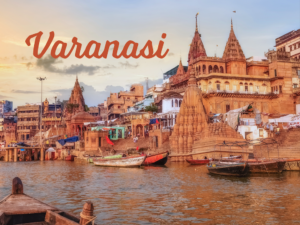Kashi Vishwanath Temple: The Most Famous Place of Visit in Varanasi
Introduction
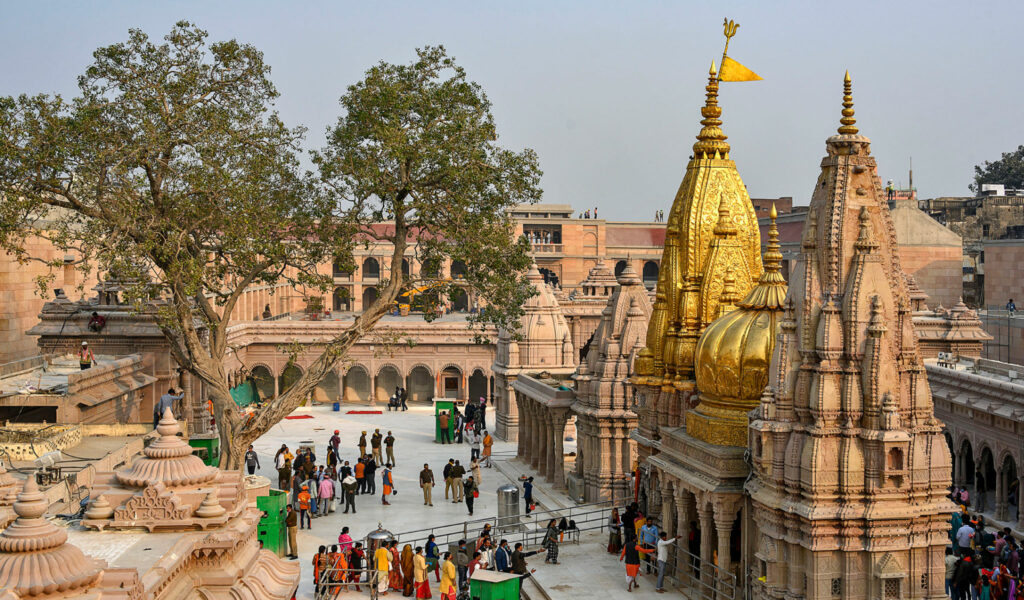
Varanasi, also known as Kashi or Banaras, is one of the oldest living cities in the world and is often referred to as the spiritual capital of India. Perched gracefully on the western banks of the holy River Ganga, this ancient city is a melting pot of history, devotion, and culture. Every narrow lane, sacred ghat, and towering temple tells a story that goes back thousands of years. For countless devotees and travelers alike, Varanasi is not just a city—it is a spiritual experience.
Among the many famous places in Varanasi, the Kashi Vishwanath Temple stands out as the city’s crowning jewel. Dedicated to Lord Shiva, the supreme deity who is believed to reside in Kashi itself, this temple is considered the most important among all places of visit in Varanasi. Revered as one of the 12 Jyotirlingas of India, the temple represents the eternal connection between the human soul and the divine.
Every year, millions of pilgrims, saints, scholars, and tourists make their way to the temple, seeking blessings and experiencing the energy that has made Varanasi a spiritual magnet for centuries. Whether it’s the first-time visitor who wishes to witness the magnificence of the golden spire or the devout pilgrim who comes to perform rituals for generations of ancestors, the Kashi Vishwanath Temple holds a special place in every journey.
For those planning their trip, the temple is much more than a religious stop—it is a once-in-a-lifetime experience that combines faith, architecture, history, and local culture. It is said that even a single darshan (glimpse) of the holy Shiva Lingam at Kashi Vishwanath is equivalent to visiting all other shrines across India. No wonder it tops every list of Varanasi visit places.
But beyond its spiritual aura, the temple is also a testimony to resilience. Having been demolished and rebuilt multiple times throughout history, it stands today not only as a house of worship but also as a symbol of the unbroken faith of millions. Its golden spire gleams against the sky, reminding visitors of the city’s eternal legacy.
This blog will serve as your tour guide in Varanasi, providing everything you need to know before your visit—its rich history, rituals and aartis, architecture, travel tips, and nearby attractions. Whether you are a devotee seeking moksha, a traveler exploring India’s heritage, or a curious soul fascinated by culture and tradition, this comprehensive guide will help you uncover why the Kashi Vishwanath Temple is considered the beating heart of Varanasi.
History of Kashi Vishwanath Temple
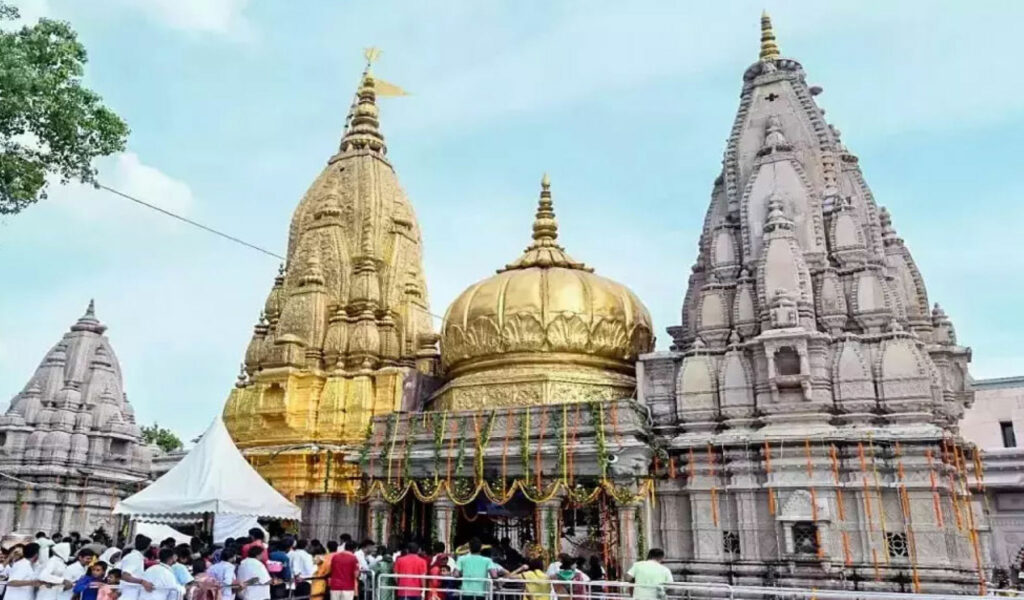
The Kashi Vishwanath Temple is not just a monument of stone and gold—it is a living embodiment of faith, resilience, and India’s spiritual legacy. Mentioned in ancient scriptures such as the Skanda Purana, Shiva Purana, and the Kashi Khanda, the temple is believed to be one of the 12 Jyotirlingas, the most sacred abodes of Lord Shiva. For centuries, it has drawn seekers from every corner of the world who wish to experience the divine essence of Varanasi.
Ancient Origins
The earliest references to the shrine date back thousands of years. According to legends, Lord Shiva himself declared that anyone who prays at Kashi will attain liberation. This made the site the most significant among all places of visit in Varanasi for devotees of Shiva.
Turbulent Past – Destruction and Rebuilding
The temple’s history is also a testament to its resilience. Over the centuries, the shrine was attacked, plundered, and destroyed multiple times during foreign invasions. Yet, each time, it rose again—rebuilt with faith and devotion by Hindu kings and patrons.
•Medieval Period: The original temple was demolished during the reign of Qutb-ud-din Aibak in the 12th century.
•Later Restorations: Raja Man Singh of Amber and Raja Todar Mal (one of Akbar’s Navratnas) contributed to its revival.
•Aurangzeb’s Rule: In 1669, Emperor Aurangzeb ordered the demolition of the temple. On its ruins, the Gyanvapi Mosque was constructed, which still stands adjacent to the temple. The sacred Shiva Lingam was hidden in the nearby well (Gyan Vapi Well) by priests to protect it.
This period marked one of the most turbulent phases in the temple’s history, but the devotion of the people never wavered.
The Current Structure
The present-day Kashi Vishwanath Temple owes much to Rani Ahilyabai Holkar of Indore, who rebuilt it in 1780 after centuries of turmoil. Her vision restored the temple’s glory and re-established it as the heart of Varanasi’s spiritual landscape.
Later, in 1835, Maharaja Ranjit Singh of Punjab, known for his devotion and generosity, donated nearly 800 kilograms of gold to cover the temple’s dome and spire. This magnificent gesture gave the shrine its iconic identity as the Golden Temple of Varanasi.
Saints and Scholars
The temple has been visited by some of the greatest saints, philosophers, and thinkers in Indian history:
•Adi Shankaracharya consolidated Hinduism and emphasized the significance of Kashi Vishwanath.
•Goswami Tulsidas, who wrote the Ramcharitmanas, often worshipped here.
•Swami Vivekananda and Maharshi Dayananda Saraswati drew inspiration from the temple’s divine energy.
Their presence added layers of cultural and spiritual depth, making the temple a place where history, religion, and philosophy converge.
Significance of the Kashi Vishwanath Temple

The name “Vishwanath” translates to Lord of the Universe, and this is exactly how devotees perceive Lord Shiva in Varanasi. For centuries, the Kashi Vishwanath Temple has been regarded as the spiritual epicenter of Hinduism, making it the most revered among all Varanasi visit places.
According to Hindu beliefs, the city of Kashi (Varanasi) was founded by Lord Shiva himself, and this temple is the sacred space where His divine energy is eternally present. Pilgrims believe that offering prayers here cleanses one’s sins and paves the way for moksha (liberation from the cycle of birth and death).
Why the Temple is Spiritually Important:
•One Darshan Equals All Temples: Scriptures mention that a single darshan of the Jyotirlinga at Kashi Vishwanath is as powerful as visiting all other shrines in India. For this reason, the temple ranks highest among all famous places in Varanasi.
•Connection with the Ganga: Located close to the Dashashwamedh Ghat, the temple’s sanctity is further amplified by the holy River Ganga. Devotees often perform rituals in the river before entering the temple.
•Promise of Moksha: It is believed that even uttering the name of “Kashi” leads one towards salvation. Many Hindus wish to spend their final days in Varanasi so their souls may find liberation near this sacred site.
•Center of Faith: Saints like Adi Shankaracharya, Tulsidas, and Swami Vivekananda have affirmed the temple’s divine power, adding to its reputation as a must-visit among places of visit in Varanasi.
Thus, the temple is not merely a destination but a life-changing experience for millions of devotees who arrive here seeking peace, blessings, and liberation.
Architectural Marvel of Kashi Vishwanath Temple
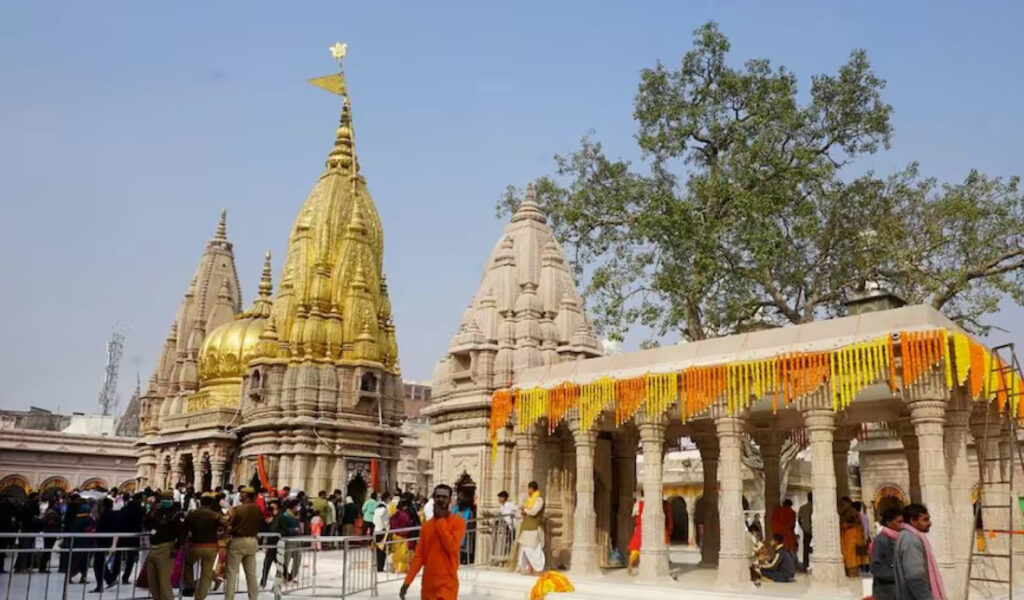
While the spiritual significance of the temple is unparalleled, its architecture also adds to its grandeur and beauty. Unlike many massive temples of India, the Kashi Vishwanath Temple is compact but deeply elegant, symbolizing devotion over size.
Key Features of the Temple’s Architecture:
•Style: The temple is built in the traditional Nagara style of architecture, known for its curvilinear towers (shikharas) and intricate stonework. Despite its modest dimensions, the design reflects centuries of craftsmanship and devotion.
•Golden Dome & Spire: Perhaps the most striking feature is the temple’s golden dome and spire. Nearly 800 kilograms of gold were donated by Maharaja Ranjit Singh of Punjab in 1835, making the temple shine like a jewel in the heart of the city. When the sunlight hits the dome, the temple glows, visible from a great distance, and stands as a beacon of faith for pilgrims arriving in Varanasi.
•Garbhagriha (Sanctum Sanctorum): At the core lies the Jyotirlinga, a black stone Shiva Lingam, representing Lord Vishwanath (the Lord of the Universe). Devotees circle the sanctum, offering milk, water, honey, flowers, and Bilva leaves in reverence.
•Smaller Shrines: Surrounding the main sanctum are smaller shrines dedicated to deities like Lord Kala Bhairava (the guardian of Kashi), Goddess Annapurna (goddess of food and nourishment), Lord Ganesha, and others. These shrines create a spiritual ecosystem where devotees can seek blessings from multiple divine forces.
•Sacred Geometry: The layout of the temple aligns with ancient Vedic architectural principles, emphasizing harmony between cosmic energies and earthly existence.
Rituals and Aartis at Kashi Vishwanath Temple

One of the most enchanting experiences of the Kashi Vishwanath Temple is witnessing its age-old rituals and aartis. These ceremonies transform the temple into a divine stage of chants, bells, conch shells, and devotion, leaving visitors spellbound. For many pilgrims, attending these rituals is just as important as the darshan itself, making it one of the must-do activities in their list of Varanasi visit places.
1. Mangala Aarti – The Dawn Blessing
•Timing: Around 3:00 AM to 4:00 AM
•Experience: The day begins before sunrise with the Mangala Aarti, considered the most sacred of all rituals. Priests awaken Lord Shiva with melodious chants, incense, and offerings of milk, curd, ghee, and honey.
•Why it’s special: Few are lucky enough to attend this aarti, as seats are limited and tickets need to be booked in advance. The atmosphere is serene, and the spiritual vibrations are unforgettable.
A tour guide in Varanasi can help you secure entry passes since demand is very high.
2. Bhog Aarti – Offering of Food
•Timing: Around 11:30 AM
•Experience: During the Bhog Aarti, offerings of freshly cooked food are presented to the deity. Devotees can later partake in prasadam.
•Why it’s special: It reflects the belief that Lord Vishwanath is not just worshipped but treated as a revered family member, with meals offered daily.
3. Sandhya Aarti – Evening Ritual
•Timing: 6:00 PM – 7:00 PM (varies by season)
•Experience: As the sun sets, the temple glows with oil lamps, and the atmosphere fills with rhythmic chanting, bells, and conch sounds. It marks the transition from day to night, symbolizing protection and blessings.
•Why it’s special: Pilgrims often attend this aarti after participating in the Dashashwamedh Ghat Ganga Aarti, creating a complete evening of devotion.
4. Shringar Aarti – Night Decoration
•Timing: Around 9:00 PM
•Experience: In this ritual, the Shiva Lingam is adorned with flowers, sandalwood paste, jewels, and fresh clothes. The deity is decorated as a groom, symbolizing his cosmic role as the Lord of the Universe.
•Why it’s special: The intricate decoration and devotion of the priests make it a mesmerizing experience.
5. Shayan Aarti – The Final Offering
•Timing: 10:30 PM – 11:00 PM
•Experience: The day ends with the Shayan Aarti, where Lord Shiva is ceremonially put to rest. Devotees chant hymns as lamps are waved in the sanctum, creating a peaceful conclusion to the day’s worship.
•Why it’s special: It gives pilgrims a sense of closure and tranquility, ensuring that their prayers have been heard before they leave.
Special Rituals You Shouldn’t Miss
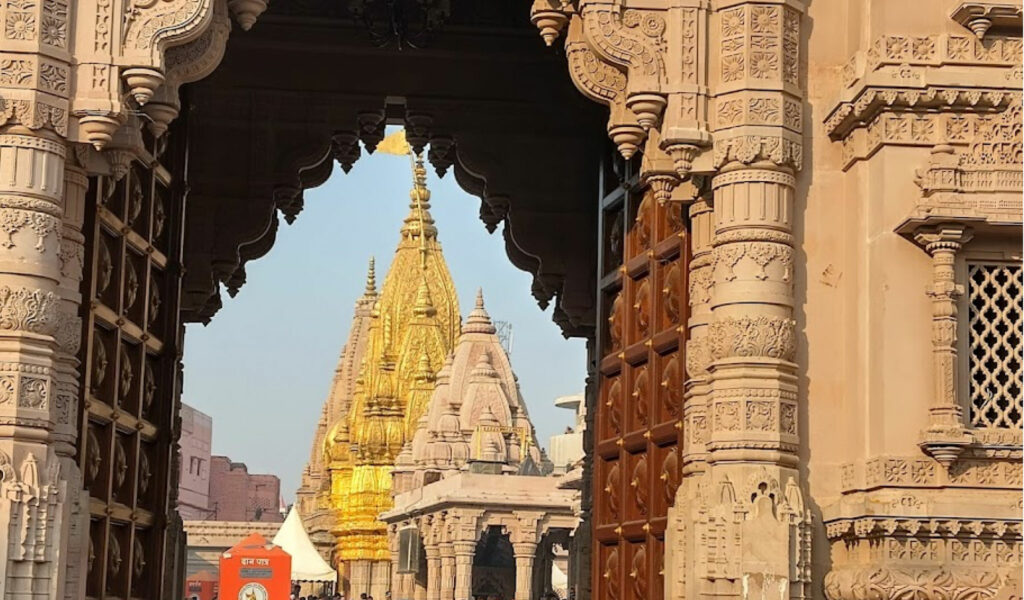
• Rudrabhishek Puja: A deeply spiritual offering where the Shiva Lingam is bathed with milk, honey, ghee, water, and Bilva leaves while Vedic hymns are chanted.
•Shravan Maas (July–August): The holiest month for Lord Shiva. Thousands of devotees visit daily, carrying Ganga water in kanwars to offer at the temple.
•Maha Shivaratri: The grandest festival celebrated at Kashi Vishwanath, with non-stop rituals, processions, and chanting through the night.
Tips for Visitors
Book aarti passes online or through authorized counters well in advance.
•Arrive at least 45 minutes before the aarti begins, as security checks can take time.
•A local tour guide in Varanasi can help navigate crowds, explain rituals, and ensure a smooth experience.
•Dress traditionally and modestly to respect the sanctity of the rituals.
How to Reach Kashi Vishwanath Temple
If you’re planning a trip, reaching the temple is easy but requires a bit of local know-how since it lies in the narrow lanes of Varanasi.
•By Air: The Lal Bahadur Shastri Airport is about 25 km away.
•By Train: Varanasi Junction, Manduadih, and Mughal Sarai (Pt. Deen Dayal Upadhyay) stations are nearby.
•By Road: Well-connected highways link Varanasi to Lucknow, Prayagraj, Patna, and other cities.
Once in Varanasi, you’ll need to walk through bustling lanes filled with shops selling flowers, sweets, Rudraksha beads, and Banarasi silk.
Timings and Entry Rules
•Opening Hours: 4:00 AM – 11:00 PM.
•Aarti Timings: Vary by session (morning, midday, evening).
•Entry Fee: General entry is free; special pujas require tickets.
•Dress Code: Traditional attire recommended; men in dhoti-kurta, women in saree/salwar.
👉 Tip from a tour guide in Varanasi: Mobile phones, cameras, and large bags are not allowed inside. There are lockers available near the entrance.
Nearby Varanasi Visit Places
A trip to the Kashi Vishwanath Temple is incomplete without exploring the nearby attractions. Here are some of the top places of visit in Varanasi:
1.Dashashwamedh Ghat – Famous for the grand evening Ganga Aarti.
2.Assi Ghat – A vibrant spot for yoga, cafes, and boat rides.
3.Manikarnika Ghat – Known as the eternal cremation ground, symbolizing liberation.
4.Sankat Mochan Hanuman Temple – Established by Goswami Tulsidas, deeply revered.
5.Tulsi Manas Temple – Where Tulsidas composed the Ramcharitmanas.
6.Banaras Hindu University (BHU) – Home to the New Vishwanath Temple.
7.Ramnagar Fort – A riverside fort with a museum of royal artifacts.
8.Gyan Vapi Well – Said to contain a part of the original Shiva Lingam.
These make Varanasi one of the richest cities in terms of spirituality, history, and culture.
Cultural Experiences Around the Temple
Apart from visiting the temple, immerse yourself in local traditions:
•Boat Ride on the Ganga: Early morning rides offer stunning views of ghats and temples.
•Banarasi Silk Shopping: Visit local weavers for authentic sarees.
•Street Food Tour: Try kachori-sabzi, tamatar chaat, and Banarasi paan.
•Classical Music: Attend a sitar or tabla recital, as Varanasi is a hub of Indian classical music.
Tips from a Tour Guide in Varanasi
To make your trip smooth, here are expert suggestions:
•Arrive early morning to avoid crowds.
•Book a local guide for insights into rituals and hidden spots.
•Carry minimal belongings; temple security is strict.
•Stay in a hotel near Dashashwamedh Ghat for easy access.
•Respect local traditions—remove footwear and dress modestly.
Best Time to Visit
Winter (October–March): Pleasant weather, ideal for temple visits and boat rides.
•Shravan Maas (July–August): Holiest time for Shiva devotees, though crowded.
•Festivals: Maha Shivaratri and Dev Deepawali see grand celebrations.
Why Kashi Vishwanath Tops the List of Famous Places in Varanasi
Among all places of visit in Varanasi, Kashi Vishwanath Temple is the most revered because:
•It is one of the 12 Jyotirlingas.
•It stands close to the sacred Ganga.
•It offers an unparalleled spiritual experience.
•It connects travelers to the soul of ancient India.
No wonder millions include it in their bucket list of Varanasi visit places.
Conclusion
The Kashi Vishwanath Temple is not just a religious site—it is the beating heart of Varanasi, a city where time, tradition, and spirituality coexist. From its golden spire to its eternal chants, from morning aartis to evening rituals, the temple is a once-in-a-lifetime experience.
So, if you’re planning a trip and searching for the best tour guide in Varanasi, remember: your journey starts with a darshan at Kashi Vishwanath. It’s more than a visit—it’s a spiritual awakening.
Frequently Asked Questions (FAQ) About Kashi Vishwanath Temple
1. Why is Kashi Vishwanath Temple so famous?
The Kashi Vishwanath Temple is one of the 12 Jyotirlingas of Lord Shiva, making it one of the most sacred shrines in Hinduism. Its golden spire, rich history, and location on the banks of the holy Ganga make it the most important among all famous places in Varanasi.
2. What is the best time to visit the temple?
The best time to visit is during winter (October to March) when the weather is pleasant. For spiritual seekers, Maha Shivaratri and Shravan Maas (July–August) are especially significant, though very crowded. Early mornings are ideal for darshan.
3. How can I reach the Kashi Vishwanath Temple?
By Air: Lal Bahadur Shastri Airport (25 km away).
By Train: Varanasi Junction, Manduadih, and Mughal Sarai are the nearest stations.
By Road: Connected by highways to major cities.Since the temple is in the old city’s narrow lanes, visitors often walk the last stretch. A tour guide in Varanasi can help navigate easily.
4. What are the temple timings?
The temple generally opens around 4:00 AM and closes at 11:00 PM. Multiple aartis take place throughout the day, including Mangala Aarti (early morning), Bhog Aarti, Sandhya Aarti, Shringar Aarti, and Shayan Aarti.
5. Is there any entry fee?
Entry for darshan is free. However, special pujas and aarti passes (like Mangala Aarti or Rudrabhishek) are chargeable.
6. Are mobile phones allowed inside?
No, mobile phones, cameras, and large bags are not permitted inside. Lockers are available near the temple for storage.
7. Can foreigners visit the temple?
Yes, the Kashi Vishwanath Temple is open to all devotees, including foreigners, regardless of religion or nationality. However, visitors must respect dress codes and temple rules.
8. What other places can I visit near Kashi Vishwanath Temple?
Nearby Varanasi visit places include:
Dashashwamedh Ghat – Known for the Ganga Aarti.
Assi Ghat – Popular for sunrise yoga and boat rides.
Manikarnika Ghat – The eternal cremation ground.
Sankat Mochan Hanuman Temple – A must for Hanuman devotees.
Banaras Hindu University (BHU) – Home to the New Vishwanath Temple.
9. Do I need a guide for visiting the temple?
While not compulsory, hiring a tour guide in Varanasi is highly recommended. A local guide can explain the rituals, help with aarti passes, and take you through nearby hidden gems without hassle.
10. Why is it said that dying in Kashi leads to moksha?
According to Hindu beliefs, Lord Shiva himself whispers the Taraka Mantra in the ears of those who die in Kashi, ensuring their soul’s liberation. This is why many devotees wish to spend their final days here.

